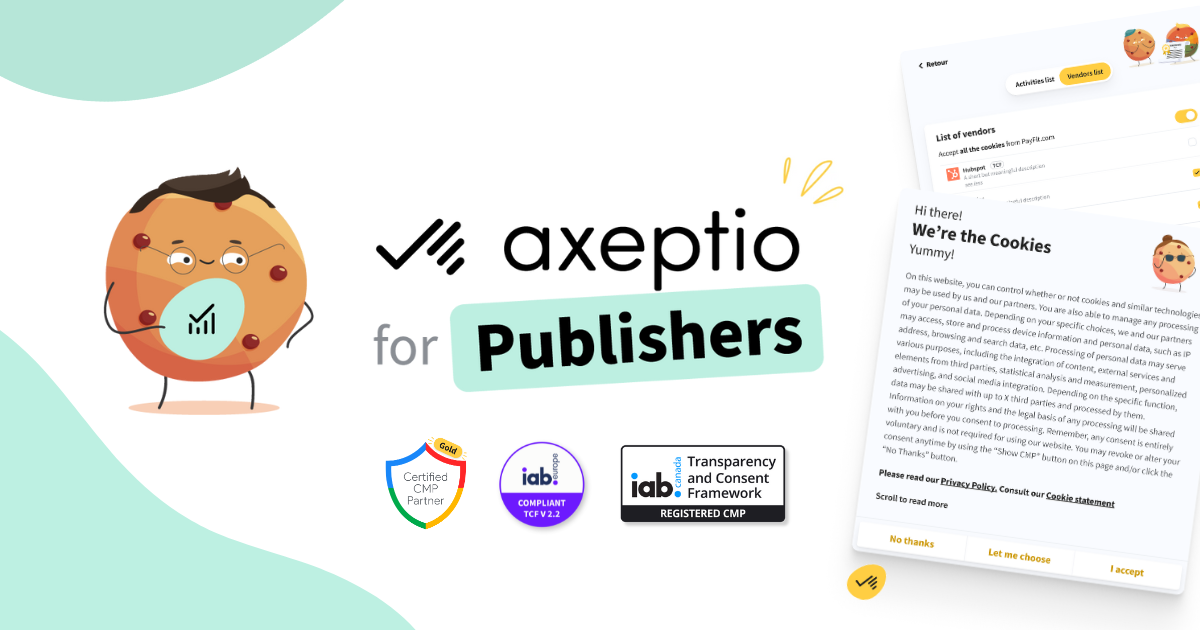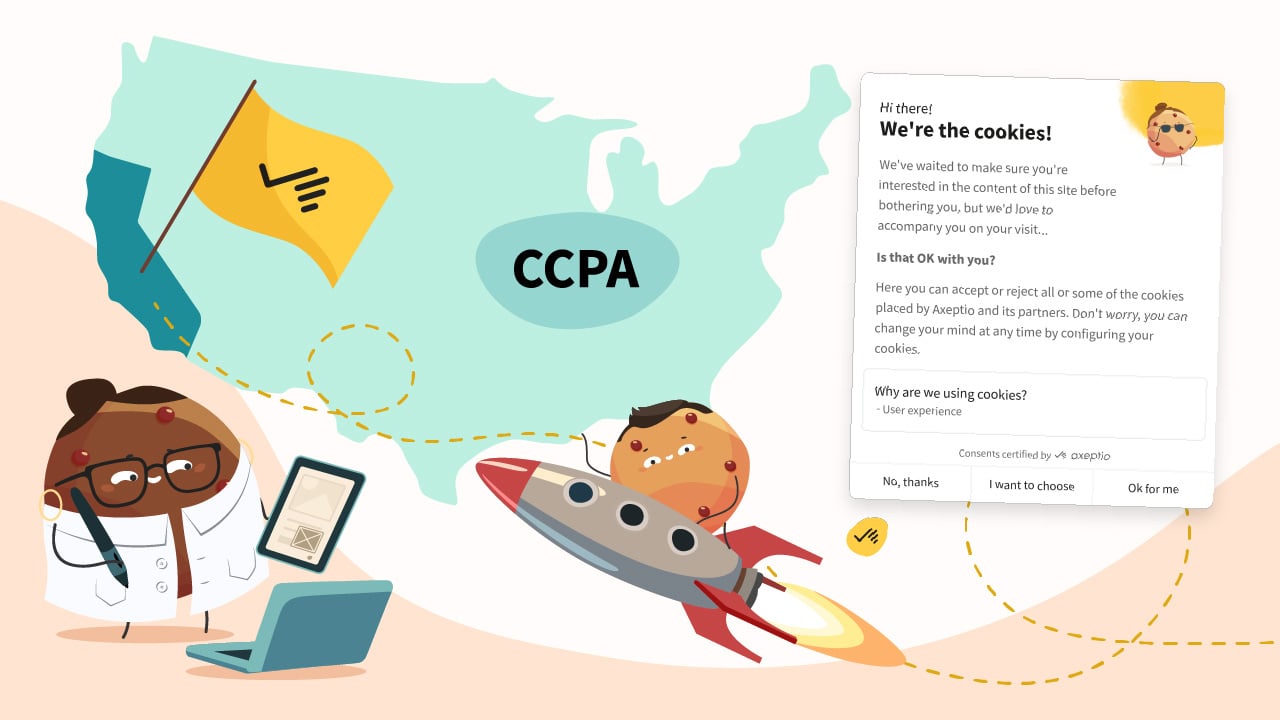We use mobile apps every single day—in fact, you might be reading this blog because you were on an app that led you here. A few weeks ago, I (Blake Wisz) had the opportunity to attend the App Growth Summit (AGS) in New York, where industry leaders, like NBC News, Peloton, STASH, and many more, gathered to discuss the latest trends shaping the mobile app ecosystem.
Representing Axeptio alongside our CRO, Jerome Perani, I joined a lineup of speakers from companies driving innovation in app growth and user engagement. Over two days, conversations spanned everything from acquisition strategies to retention mechanics, but five key insights stood out as particularly relevant for app developers and marketers navigating today’s evolving landscape.

1 - Subscription Apps Need to Analyze Lifetime Value (LTV)
A common theme among app leaders was user acquisition (UA) and subscriptions. This is the lifeblood of how apps scale and grow over time. Many apps invest heavily in UA, and it makes sense. The customer acquisition cost (CAC) today could lead to long-term customers tomorrow, boosting LTV (Lifetime Value).
Josh Chandley, COO of WildCard Games, made a compelling case for abandoning short-term revenue fears in favor of sustainable, long-term growth:
“Don’t cling to the old thing just to avoid cannibalization. If the new thing drives more LTV, even if the short-term ARPU (Average Revenue Per User) is lower, let the old one die.”
What I loved about this was the long-term mindset Josh and his team have. In other words, don’t stress over quick wins if they hurt your long-term growth. Too often, companies hesitate to pivot from legacy models, fearing initial revenue dips. Yet, as Josh highlighted, those willing to prioritize LTV ultimately see a stronger business sustainability.
Patrick Falzon, CEO of The App Shop, offered another reality check for subscription-based apps:
“If you are having subscribers cancel after a few days or weeks—you probably are not a subscription app.”
In other words, if your users prefer one-time purchases, packages, or passes, forcing a subscription model on them will only lead to churn. Instead, developers should align their revenue strategies with real user behavior, rather than trying to mold that behavior to fit an arbitrary business model.
2. The Fine Line Between Engagement and Overload in Push Notifications
Mobile notifications are a double-edged sword. When used strategically, they can enhance user engagement. When overused, they drive churn.
Harsh Alkutkar, Lead Engineer at DoorDash, underscored this balance with a simple but powerful insight:
“When you send more than one notification a week, uninstalls increase.”
News and social apps might get away with more notifications, but for most apps, over-messaging users will push them away. This insight is particularly relevant as Apple continues to refine its Distraction Control policies, making it harder to capture and maintain user attention. The underlying problem? Many notifications fail because they lack relevance, are poorly worded, or don’t offer a clear value proposition.
The key takeaway here is that apps should use the data their users have consented to share to personalize notifications effectively. A well-timed message—e.g. whether it’s a discount for a favorite restaurant or free delivery during a frequently used time slot—can make the difference between engagement and frustration.
Which brings us to the next key point;
3. Privacy and Compliance: A New Standard for App Onboarding
Consent Management Platforms (CMPs) are no longer optional—they’re a must. At AGS NYC, we highlighted with Jerome why privacy-first design is now a fundamental expectation for mobile apps:
- Regulations are expanding. Data privacy laws used to be primarily associated with the European Union. Today, more and more countries are following this trend, including the USA with more than 19 states that have now enacted their own privacy laws.
- Non-compliance comes at a cost. Even if an app is based outside a regulated region, serving users in those regions means compliance is mandatory.
- A poor consent experience damages retention. If users don’t trust how their data is handled, they will leave.
Not all CMPs are created equal. At Axeptio, we focus on creating a smooth integration that balances compliance with user experience. This CMP is designed to be easy to implement, visually adaptable to your brand, multilingual, and structured to optimize opt-in rates while meeting regulatory requirements.
During this session, Jerome Perani, CRO of Axeptio, debunked the main misconceptions about the role of CMP, ATT and technical authorizations:
“Many businesses mistakenly believe that obtaining system-level authorizations—such as access to location, contacts, or push notifications—automatically ensures compliance. In reality, these permissions only grant technical access; they do not equate to informed consent for data processing under regulations like GDPR.”
Want to find out more? The replay of this keynote is available on our blog.
4. Community Drives Attention and Retention
Among the most forward-thinking strategies discussed at AGS was the growing emphasis on in-app communities. In fact, the best-performing apps are building communities (and therefore engagement) inside their platforms, since when users feel connected, they stick around longer.
A great example of this is Dub, a copy-trading app. Their CEO, Steven Wang, explained how their community-driven approach fuels retention:
- Built-in networking features that encourage knowledge-sharing among members.
- Real-time interactions that shift the experience from mere transactions to meaningful conversations.
- Third-party integrations that streamline user connectivity without reinventing the wheel.
This shift underscores a broader trend: apps that facilitate user connections—whether through embedded forums, dedicated Slack or Discord groups, or direct social features—see higher engagement, lower churn, and stronger brand loyalty.
5. What’s Next for Mobile Apps?
AGS NYC reinforced that the mobile landscape is evolving at a rapid pace. As developers and marketers, the challenge isn’t just to keep up but to anticipate where the industry is headed. Three trends are set to define the next era of mobile app growth:
- AI-powered experiences will continue to redefine personalization and user interaction.
- Privacy-first UX will move from being a regulatory requirement to a core user expectation.
- Utility-driven apps—those that genuinely simplify life or solve specific pain points—will outperform those reliant on gimmicks.
For those in the app ecosystem, the message is clear: growth isn’t just about acquisition; it’s about retention, trust, and long-term value creation. At Axeptio, we remain committed to helping apps navigate these challenges by making consent management intuitive, compliant, and user-friendly. If AGS NYC made one thing evident, it’s that the future of mobile success lies in putting users first—through better privacy practices, smarter engagement strategies, and community-driven experiences.
Are these insights relevant to your business? Our team of experts can support your project.






